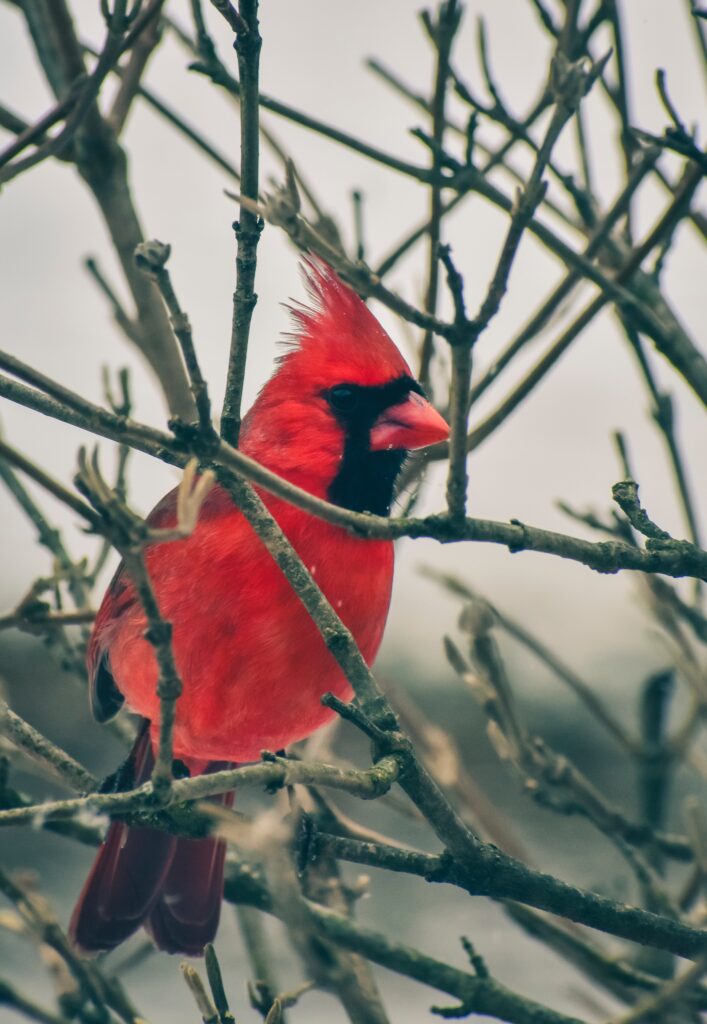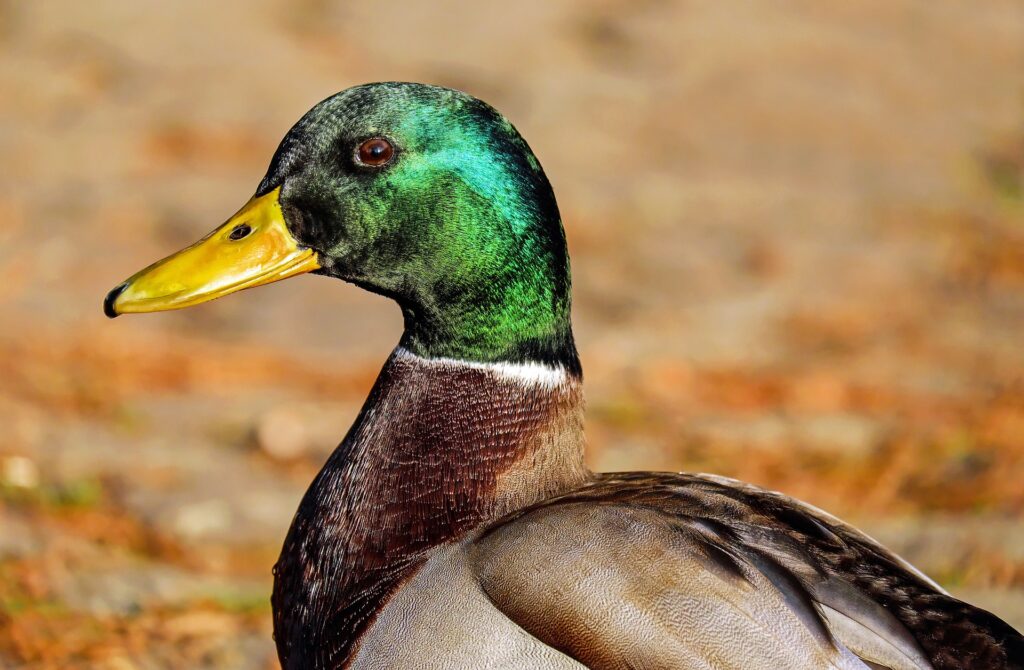
You wake up to find a bird's nest nestled snugly in your favorite porch swing. Dilemma alert! While their dedication is admirable, its location throws a wrench in your morning coffee plans. So, what do you do? Can you move a birds nest and simply evict these feathered tenants?
Brace yourself, bird lovers, because the answer might surprise you! This guide unpacks the surprising truth about moving bird nests, exploring the legal hurdles, ethical considerations, and even unconventional solutions for peaceful coexistence. Get ready to dive into the fascinating world of birds, their homes, and how to be a responsible neighbor (even if they don't pay rent!).
Table of Contents
ToggleCan You Move a Birds Nest?
While the urge to relocate a bird's nest might be strong, hold your feathers! Moving it is generally illegal and harmful to the feathered family inside. Birds are fiercely protective of their homes, and disturbing them can lead to nest abandonment, reduced hatching success, and even harm to young birds.
But don't worry! This guide will explore ethical and legal alternatives, like deterring nesting in unwanted spots or creating alternative nesting sites. We'll also briefly touch on rare exceptions where moving a nest might be considered, with permits and expert guidance. Remember, respecting wildlife comes first! So stay tuned for solutions that ensure both your needs and the birds' well-being are met.
Legal Hurdles and Ethical Dilemmas: Why Moving a Nest is a No-Fly Zone
While the desire to relocate a seemingly inconvenient bird's nest might be understandable, venturing down that path can lead to unforeseen complications. Before contemplating this action, it's crucial to consider the legal and ethical implications, which often intertwine like the branches of a sturdy oak.
Legality: The Migratory Bird Treaty Act (MBTA) and similar regional laws in many countries act as protective shields for birds, their nests, and eggs. Disturbing any active nest, including moving it, is strictly prohibited and can result in fines or even imprisonment. This applies even if the nest is located on your property, as birds and their nests are considered shared resources protected by law.
Ethical Concerns: Beyond the legal repercussions lie the ethical considerations. Moving a nest, even with good intentions, can have devastating consequences for the birds. Imagine the stress and confusion caused by suddenly displacing their carefully constructed home. This can lead to:
- Nest Abandonment: Disrupted birds might simply abandon their nest, leaving eggs or young chicks vulnerable to the elements and predators.
- Reduced Hatching Success: The stress of relocation can negatively impact egg development and hatching success, leading to fewer surviving chicks.
- Harm to Young Birds: Young birds are particularly fragile and rely on their parents for warmth and food. Moving the nest can separate them, leading to starvation or hypothermia.
These potential outcomes paint a stark picture of the harm caused by displacing a nesting family. Remember, birds are just as invested in raising their young as we are, and their well-being deserves our respect and consideration.
Therefore, in most cases, moving a bird's nest is not only illegal but also unethical and harmful. However, don't fret! This isn't the end of the road. In the next section, we'll explore alternative solutions for peaceful coexistence with your feathered neighbors.
When Moving a Nest Might Be Permissible (with Caution)
Let's be honest: discovering a robin's nest nestled in your prized hanging fern or a cardinal's cozy nook right above your front door can be a delightful surprise… until it becomes a logistical nightmare. While disturbing a bird's nest is generally a big no-no, there are rare situations where intervention might be necessary. But before you channel your inner MacGyver, remember this is delicate territory, so proceed with extreme caution and only after carefully considering these points:
- Danger Zone! Is the nest in immediate peril? Think falling branches, construction zones, or curious cats with questionable climbing skills. If the nest faces imminent destruction, carefully relocating it might be the only way to save the feathered family.
- Location, Location, Location… not so great. Sometimes, Mother Nature picks some truly bizarre nesting spots. Imagine a house sparrow deciding your barbeque grill is the ultimate penthouse suite. While inconvenient, it's usually best to just grin and bear it until the chicks fledge. But if the location poses a serious safety risk to humans or pets, consulting wildlife professionals might be your best bet.
- Ghost Town? You've peeked and you've peeked, but there's been no sign of feathered activity for weeks. Eggs haven't hatched, and the nest seems eerily still. Caution: abandoned nests are rare, and it's crucial to be absolutely sure before taking action. Consult local wildlife experts to confirm abandonment and get guidance on safe removal.
Remember, even in these scenarios, moving a nest is a last resort. It's stressful for the birds, and there's a high chance they'll abandon their home anyway. So, before you become the world's most reluctant bird sherpa, exhaust all other options! Talk to wildlife professionals, get creative with deterrents, and remember, a little patience goes a long way in helping our feathered friends raise their families. After all, sharing your space with nature (even when it's a bit inconvenient) is a pretty cool privilege, wouldn't you agree?
How to Move a Nest (if absolutely necessary)
Okay, so you've consulted the experts, weighed the risks, and deemed moving the nest the only viable option. Buckle up, intrepid wildlife wranglers, because this mission requires meticulous planning and ninja-level stealth. Remember, the goal is to minimize stress and disruption, so move with the grace of a ballerina and the silence of a shadow.

Step 1: Gear Up Like a Pro
- Gloves: Protect yourself (and the nest) from potential parasites or bacteria. Opt for sterile gloves if possible.
- Sturdy Container: Think breathable basket or open box lined with soft material like leaves or twigs. Avoid plastic bags!
- Location, Location, Location (Again): Choose a similar spot nearby, sheltered from sun and rain. Ideally, mimic the original nest structure as much as possible.
- Timing is Key: Work quickly and quietly when the parent birds are away foraging. Disturbing them for too long can increase the chance of abandonment.
Step 2: The Delicate Maneuver
- Gently support the nest from below with your gloved hand. Remember, bird homes are surprisingly fragile!
- Carefully transfer the nest, including any nesting material and (if absolutely necessary) any eggs or chicks, to your container.
- Move swiftly and directly to the new location. Avoid unnecessary jostling or peeking.
Step 3: Hoping for the Best, but Prepared for the Worst
- Securely place the nest in its new home, mimicking the original structure.
- Monitor the situation from a distance. Do not linger! Your presence might discourage the parents from returning.
- Be prepared for the possibility of abandonment. It's a harsh reality, but unfortunately common. If the birds don't return within a few hours, contact wildlife professionals for guidance.
Remember: This is a risky undertaking, and success is not guaranteed. It's crucial to prioritize the well-being of the birds and only attempt this as a last resort with the guidance of experts. Prevention is always better than intervention! Consider creative deterrents or alternative nesting options before resorting to relocation.
By understanding the risks and following these steps carefully, you can minimize the impact on the birds if absolutely necessary. But remember, sometimes the best course of action is simply admiring these feathered architects from afar and letting nature take its course.
Alternatives to Moving a Nest
Let's face it, sometimes a determined bird decides your prized hanging basket or strategically placed porch light is the perfect nursery. While their enthusiasm is admirable, it can cause some logistical challenges. But fear not, fellow nature enthusiasts! Before you become an unwilling landlord or embark on a risky nest relocation mission, consider these peaceful alternatives:
1. Deterrence with a Dose of Creativity:
- Gently discourage nesting: Hang shiny CDs, wind chimes, or reflective tape near potential nesting sites. Birds are wary of flashy distractions.

- Offer alternative accommodations: Put up birdhouses or nesting boxes in more desirable locations. You might just attract new feathered friends!
- Natural deterrents: Sprinkle cayenne pepper or citrus peels around the area (but be mindful of harming plants). The scent can deter some birds.
2. Patience is a Virtue (and Key to Harmony):
- Sometimes, waiting it out is the best option. If the nest isn't in an immediate danger zone, simply coexist peacefully for a few weeks until the chicks fledge.
- Enjoy the opportunity to observe! From a safe distance, witness the miracle of new life and learn about the fascinating world of birds.
3. Seek Expert Advice:
- Wildlife professionals and rehabilitation centers have the knowledge and resources to offer humane solutions for bird-human conflicts.
- They can suggest safe deterrents, relocation options (if truly necessary), and even offer educational programs to deepen your appreciation for our feathered neighbors.
Remember: Respecting wildlife means finding solutions that benefit both humans and animals. With a little creativity, patience, and expert guidance, you can create a harmonious environment for everyone – even if it means sharing your space with a temporary avian family. So, put down the ladder and the gloves, and embrace the wonder of nature, even when it comes with a few unexpected twists!
Conclusion: Sharing Our World with Feathered Architects
Birds, with their intricate nests and fascinating behaviors, offer a glimpse into the wonders of the natural world. While their nesting choices can sometimes clash with our human plans, it's crucial to remember that we share this planet and its resources.
This blog post aimed to answer the question of moving bird nests – emphasizing that it should be a last resort due to the potential stress and harm to the birds. We explored legal and ethical considerations, offered alternatives like deterrents and expert advice, and emphasized the importance of respecting wildlife.
Ultimately, coexisting with birds means finding creative solutions that benefit both humans and animals. By understanding their needs and appreciating their vital role in the ecosystem, we can foster a harmonious relationship with these feathered architects who grace our world with their song and presence.
Remember:
- Always prioritize the well-being of the birds.
- Consult experts before taking any action that might disturb a nest.
- Explore alternatives to moving the nest and embrace the opportunity to learn about and appreciate our feathered neighbors.
- Sharing our world with nature, even when it comes with a few challenges, is a rewarding and enriching experience.
So, the next time you discover a bird's nest in your backyard or balcony, take a moment to marvel at the wonder of nature and remember, sharing is caring – even when it involves a few chirpy roommates!




